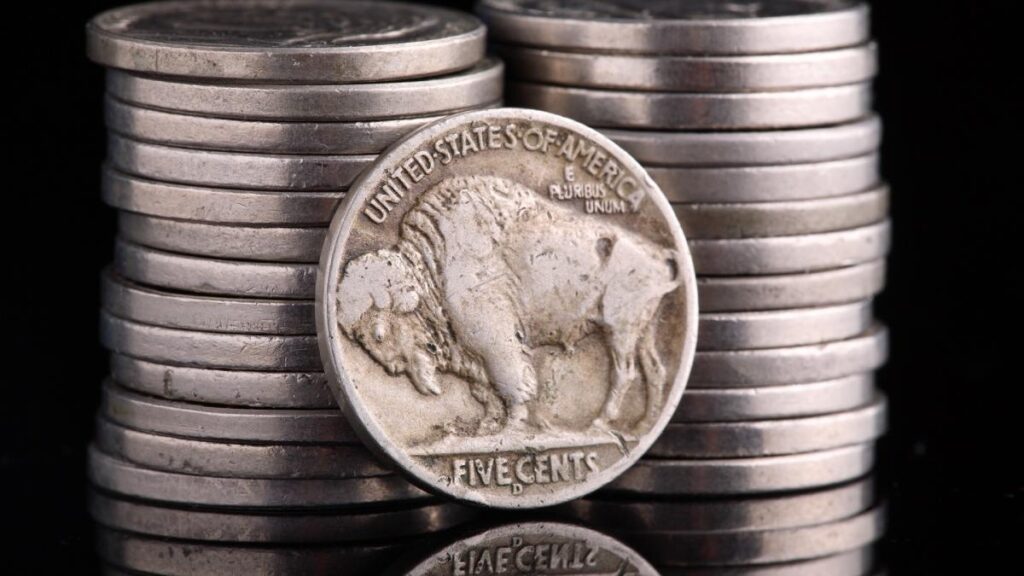Buffalo nickels are not only nostalgic coins but also potentially worth much more than five cents to rare coin collectors. Designed by Sculptor James Earle Fraser in 1911, they were in circulation from 1913 until 1938, and what started as only pocket change became valuable artifacts with historical (and maybe even monetary) significance.
Check Out: These 4 Rare Nickels From Over 20 Years Ago Are Worth a Ton Now
Read Next: 3 Things You Must Do When Your Savings Reach $50,000
In the past, finding an American Buffalo nickel, often referred to as an Indian Head Nickel, was like finding a tiny bit of history, and collectors and enthusiasts still experience that pleasure today. Collectors use the date, United States mint and condition to determine the value of Buffalo nickels.
According to expert analysis, the most valuable Buffalo nickels usually have minting errors in mint condition. There is a depiction of a Native American chief on the heads side and an American bison on the tails side. Here’s a look at the seven most valuable Buffalo nickels worth thousands of dollars.
This is one of the most famous, and by correlation, valuable Buffalo nickels in circulation. The 1937-D “three-legged” version is an excessively polished die variety with the front leg of the Buffalo missing, even though you can still spot the hoof.
See More: These 11 Rare Coins Sold for Over $1 Million
You can recognize this 1935 coin by clocking the doubled die reverse and the noticeable doubling of the words “Five Cents.” Even a trained eye would need to examine the coin under magnification to spot these distinguishing marks that indicate it being worth a fortune.
This coin was struck accidentally on a 10-cent silver planchet rather than a five-cent planchet. This error gives the Buffalo nickel dies a varied metal content, sheen and weight.
The 1913 Type 1 is the most common of the early Buffalo nickels. This was the first year of circulation.
The distinguishing marks of this rare coin developed from the overpolishing of the reverse die, resulting in a loss of detail on the front foreleg. This was coin was created in the same manner as the 1936 D version, but on a different die where the polishing was more severe and noticeable.
Story Continues


